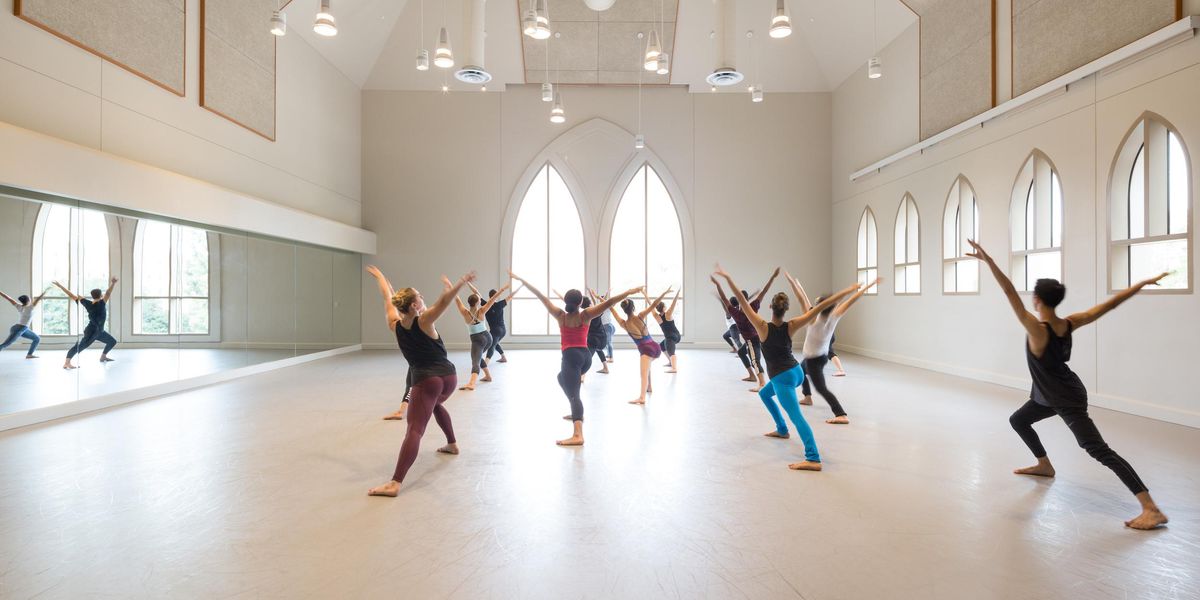Quick Q&A: Shantala Shivalingappa
speaks multiple dance languages.
Shantala Shivalingappa is a daughter of two worlds. While the dancer/choreographer is a master of kuchipudi, a highly rhythmic Indian classical dance form, she has also collaborated with contemporary directors and choreographers like Peter Brook and Maurice Béjart, and more recently Ushio Amagatsu of Sankai Juku and Sidi Larbi Cherkaoui. Born in Madras and raised in Paris by a mother who was a bharata natyam dancer (and a friend of Béjart and Pina Bausch), in 1998 she began an extended collaboration with Bausch’s Tanztheater Wuppertal, creating roles in
O Dido, Nefés, and Bamboo Blues. In June, she will perform at the International Festival of Arts and Ideas in New Haven, after which she’ll spend a week at Jacob’s Pillow. On both occasions she will present Akasha, her latest evening-length kuchipudi solo. Writer Marina Harss caught up with her this spring while Shivalingappa was in California on tour.
What was it like to work with Pina Bausch?
As a dancer in a classical form, your training is to observe and reproduce certain movements in the most precise way you can. But working with Pina Bausch, there was no model. Having a completely empty canvas and having to do something without any code or form or gestural framework, your whole approach to movement changes. And working with Pina means working with her amazing dancers, so obviously you are influenced by their way of moving. When something touches you in a strong way, it finds its way into what you’re doing. Learning her Sacre du Printemps was a big step in my training. And I remember thinking that I was able to do Sacre because of my training in the Indian martial art kalaripayat, which made my body flexible and strong.
What are some of the main features of kuchipudi?
The complex rhythms, and the interaction between the dance and the music: The music is dancing and the dancing is making music. Then there is the storytelling element: The hand gestures and the facial expressions convey feelings and emotions. Together they are a precise and descriptive language, which can be used to tell stories in a very detailed way. Beyond that there is the energy: the jumps, and the way the dance brings together something very anchored in the earth and at the same time something very light and graceful. It’s a very sensual dance, but also very strong and quick. Basically, it’s a joyful dance. Indian dance and music and arts are very celebrative, of life and prayer to the divine.
How does kuchipudi differ from bharata natyam?
The dynamics are different. Bharata natyam tends to be very square, very geometrical, with a lot of lines, and kuchipudi is full of rounded lines and curves and swaying movement. It’s more airy and intricate in the feet.
Photos here and at top by C.P. Satyajit, Courtesy Shivalingappa.
How would you describe your own style of kuchipudi?
I imbibed the style from my master, Vempati Chinna Satyam. He recodified kuchipudi and created a large repertory of choreography. He believed in letting the classical style be influenced by beautiful things. And my approach is also very much marked by the artistic journeys I’ve had the chance to experience, with Pina Bausch and living in the West and being exposed to a lot of different influences.
Tell me a little bit about your new solo,
Akasha. The germ was the word akasha, which in Sanskrit means sky or space. But there are many levels of space: the space around us, the space of the universe, the space we move in. On a more subtle level it’s the infinite space of being, the space beyond all space. In Indian philosophy it is said that akasha arises from the vibration of sound. And it’s akasha that gives rise to the whole of creation.
How did you develop this theme into a solo?
When you’re called in a certain direction, things somehow fall into place, if you can be really quiet and let them come to you. I was looking for the songs that I thought I would like to dance to, but I also let them come to me. I had no idea how it was going to look. The actual choreography happened relatively quickly, some of it in January and some of it 15 days before the premiere [in March, in Toulon, France]. I worked with my musicians in Italy, at a place I always go when I’m creating a new piece, a Hindu monastery on top of a hill, in the middle of nature, the perfect place to immerse yourself in what you’re doing.
Are you working on anything contemporary?
I’m working on a new project with Shaun Parker [an Australian choreographer who merges contemporary ballet, acrobatics, and hip-hop] in Sydney. The premiere is next January. I’m very fortunate to be able to do both solo and ensemble work. It can get very lonely doing only solos, but at the same time, it is such an intense journey of dance and music and spiritual energy.
And what is your next kuchipudi project?
[Laughs.] Honestly, every time I finish one, I never know if I will do another one.




